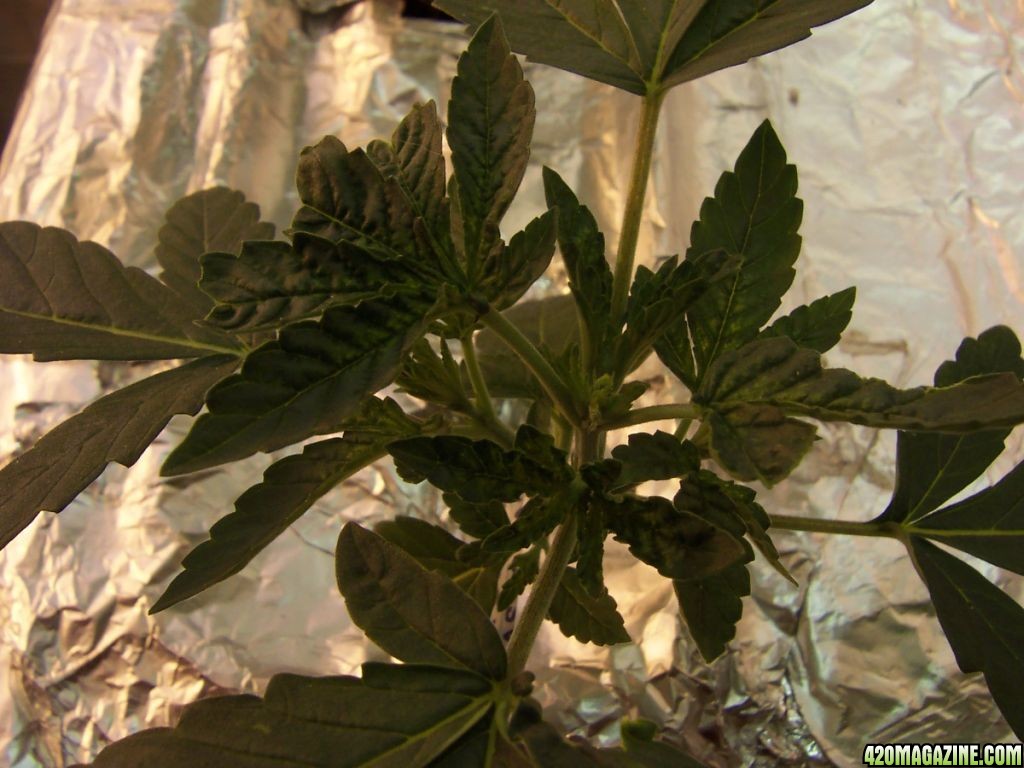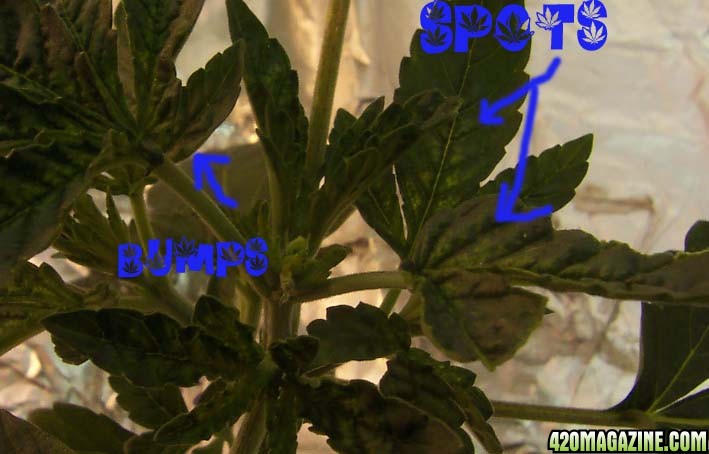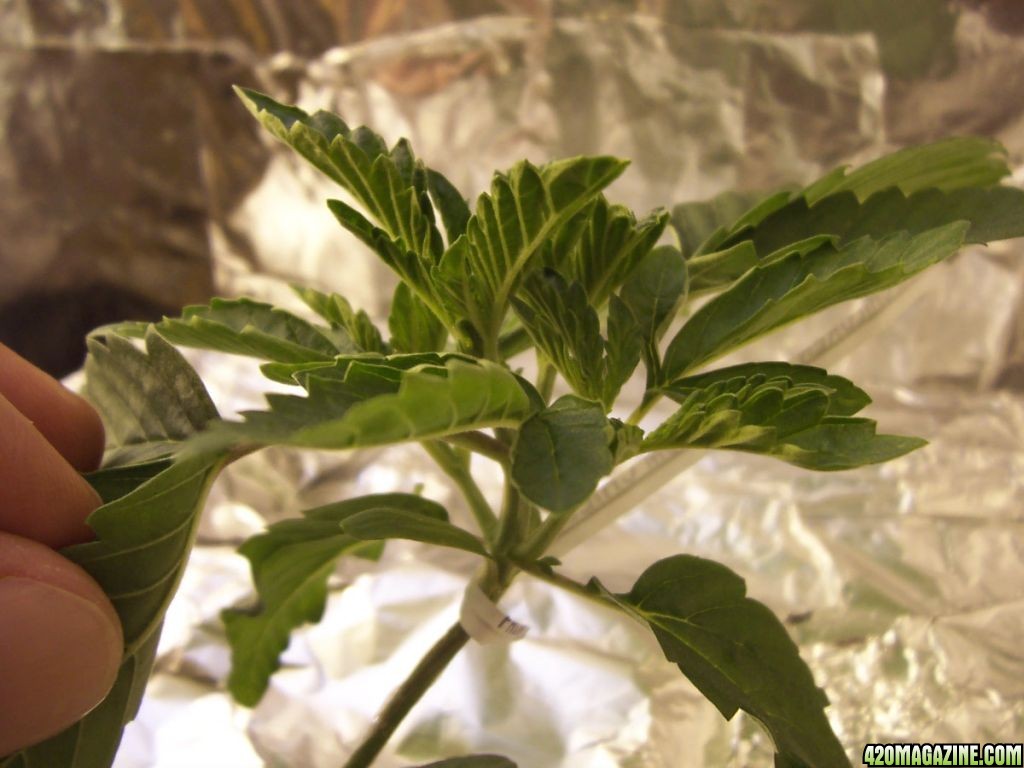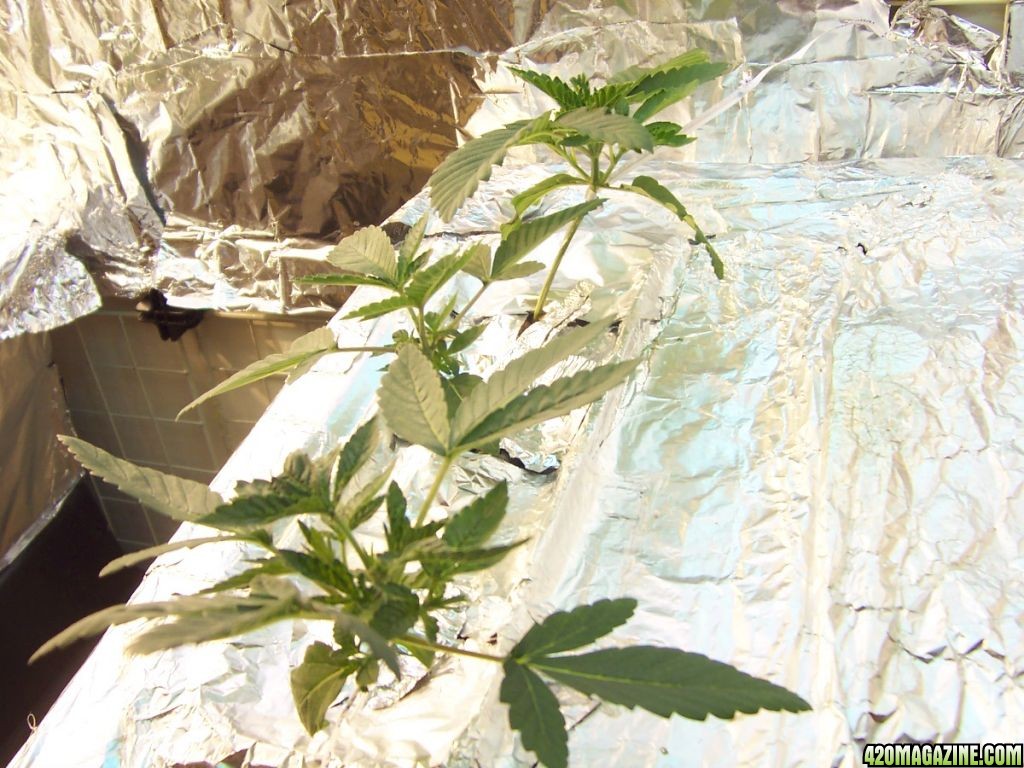GrumpyGrower
New Member
DWC
Nightshade seeds from Barneys
Standard 3 part GH nutes
two 150wt HPS “area” lights
I am using 4 gallon clear plastic totes (covered to block light)
I use one 6wt air pump and two 1 inch airstones per tote
My temps range from 74f to 86f
I use tap water, starts with a PH of 6.8ish, 300ish PPM
Please have a look at this and see if you recognize it.
I FIM topped these young nightshade females, and the new growth since then has been bright green that darkens as the leafs get older, but leaves small light green spots, and the leafs themselves are growing with a bumpy texture. One of the plants is curling up on the edges, but there is no bumpy spotted growth on that one. Meanwhile, the plants continue to grow at a normal rate with no other signs of stress.


The curling

Overall

Nightshade seeds from Barneys
Standard 3 part GH nutes
two 150wt HPS “area” lights
I am using 4 gallon clear plastic totes (covered to block light)
I use one 6wt air pump and two 1 inch airstones per tote
My temps range from 74f to 86f
I use tap water, starts with a PH of 6.8ish, 300ish PPM
Please have a look at this and see if you recognize it.
I FIM topped these young nightshade females, and the new growth since then has been bright green that darkens as the leafs get older, but leaves small light green spots, and the leafs themselves are growing with a bumpy texture. One of the plants is curling up on the edges, but there is no bumpy spotted growth on that one. Meanwhile, the plants continue to grow at a normal rate with no other signs of stress.


The curling

Overall




